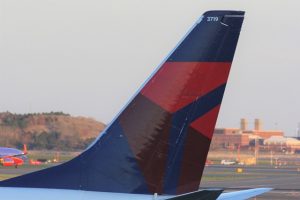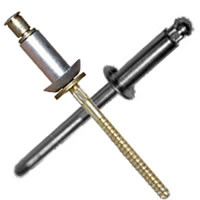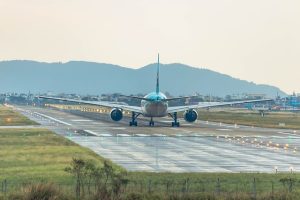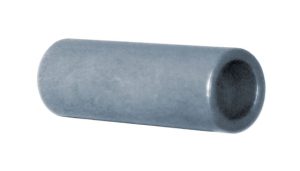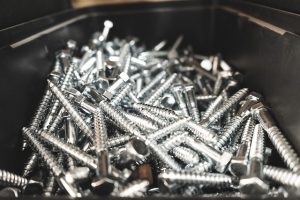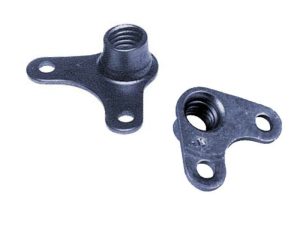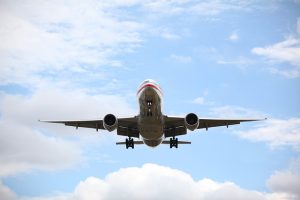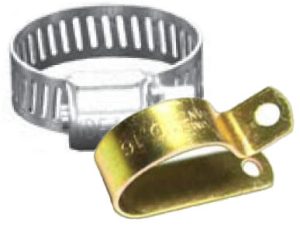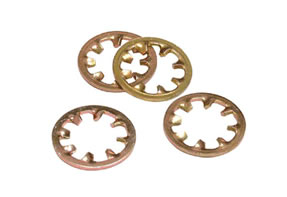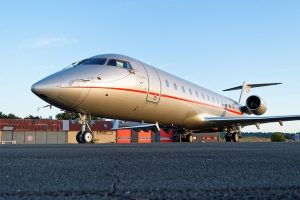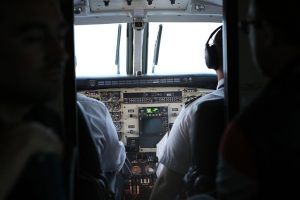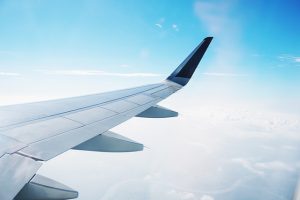
Not all airplanes have flat, straight wings. On the contrary, many of them have wingtip devices to reduce drag. Wingtip devices are aerodynamic surfaces located at the end of the wings. They typically feature a curved shape, which helps to reduce drag and improve efficiency. While some airplanes use winglets, though, others use raked wingtips.
What Are Winglets?
Winglets are vertical wing extensions on the end of an airplane’s wings. They are designed to counter vortices. During flight, vortices of air are formed at the end of the wings. A vortex is essentially a swirling mass of air. Winglets counter these vortices so that the airplane experiences less drag.
Winglets curve upwards. You can see an example of a winglet in the photo above. With their curved shape, they minimize the formation of vortices. They improve the aerodynamic properties of the wings while countering vortices and, thus, reducing drag and improving efficiency.
What Are Raked Wingtips?
Raked wingtips are extensions used to increase the aspect ratio of an airplane’s wings. They improve lift distribution by essentially increasing the airplane’s wingspan. The end result is a reduction of lift-induced drag.
Raked wingtips are curved as well, but they don’t feature the same shape as their winglet counterparts. Winglets are curved upwards, whereas raked wingtips feature a smoothly, swept-back curve shape.
Differences Between Winglets and Raked Wingtips
Winglets and raked wingtips are two different types of wingtip devices. They can both reduce drag, but there are nuances between them. Winglets and raked wingtips, feature, are shaped differently. Winglets are curved upwards. Raked wingtips, in comparison, are curved backward. You can easily distinguish between these two types of wingtip devices by checking the shape.
Raked wingtips are newer. While older airplanes typically use winglets, newer airplanes use raked wingtips. The Boeing 747-400, for instance, uses winglets, whereas the Boeing 777 uses raked wingtips.
Both winglets and raked wingtips can improve fuel efficiency. Fuel efficiency is affected by drag. The more drag an airplane creates during flight, the more fuel it will consume. Winglets and raked wingtips, however, can improve fuel efficiency by reducing drag. These aerodynamic wing surfaces counter vortices so that airplanes create less drag.
In Conclusion
Winglets and raked wingtips aren’t the same. Winglets are tip extensions that curve upwards. Raked wingtips, in comparison, are tip extensions that curve backward.
It’s important to note that there are also blended winglets. Blended winglets are characterized by a smooth curve. Winglets and raked wingtips typically have a sharp curve, but blended winglets feature a smooth curve in which they “blend” into the airplane’s wings.
- SEO Powered Content & PR Distribution. Get Amplified Today.
- PlatoData.Network Vertical Generative Ai. Empower Yourself. Access Here.
- PlatoAiStream. Web3 Intelligence. Knowledge Amplified. Access Here.
- PlatoESG. Automotive / EVs, Carbon, CleanTech, Energy, Environment, Solar, Waste Management. Access Here.
- BlockOffsets. Modernizing Environmental Offset Ownership. Access Here.
- Source: https://monroeaerospace.com/blog/winglets-vs-raked-wingtips-whats-the-difference/
- :is
- 200
- 300
- a
- above
- AIR
- Airplane
- Airplanes
- All
- also
- an
- and
- ARE
- AS
- aspect
- At
- between
- Boeing
- both
- but
- by
- CAN
- characterized
- checking
- comparison
- consume
- contrary
- Counter
- create
- creates
- curve
- designed
- Devices
- difference
- different
- distinguish
- distribution
- Dont
- during
- easily
- efficiency
- end
- essentially
- example
- Experiences
- extensions
- Feature
- flat
- flight
- For
- formation
- formed
- Fuel
- fuel efficiency
- Have
- helps
- However
- HTTPS
- important
- improve
- improving
- in
- Increase
- increasing
- instance
- into
- IT
- jpg
- less
- located
- many
- Mass
- max-width
- more
- of
- older
- on
- Others
- photo
- plato
- Plato Data Intelligence
- PlatoData
- properties
- ratio
- reduce
- reducing
- reduction
- result
- same
- see
- Shape
- shaped
- sharp
- smooth
- smoothly
- So
- some
- straight
- that
- The
- their
- Them
- There.
- These
- they
- though?
- tip
- to
- two
- types
- typically
- upwards
- use
- used
- uses
- vertical
- vs
- WELL
- whereas
- which
- while
- will
- Wing
- with
- you
- zephyrnet

